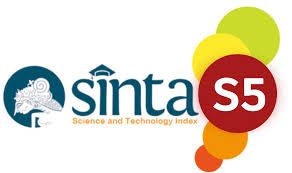Analisis Cuaca Sawah Bekas Tambang Timah di Kabupaten Bangka Berbasis Internet Of Things (IoT)
DOI:
https://doi.org/10.37253/telcomatics.v10i1.11433Keywords:
Rice fields, Weather, Internet of Things, Arduino, Telegram BotAbstract
Unpredictable weather changes in rice field areas have a direct impact on community activities, particularly in the agricultural sector. Weather data from the BMKG (Indonesian Meteorological, Climatological, and Geophysical Agency) is general in nature and not specific to small areas, and there are limitations in real-time monitoring and historical data, which pose their own challenges. This study designed a weather monitoring device based on DHT11 sensors, rain sensors, BMP180, UV, and LDR, which can record data in real-time to an SD card and send information via Telegram bot. This tool successfully identifies weather conditions such as cloudy, mostly cloudy, sunny, and rainy, as well as supporting parameters such as temperature, humidity, air pressure, UV index, and CO₂. The first measurement results showed a 79% dominance of cloudy weather, while the second measurement showed 65% cloudy weather. These findings prove the effectiveness of the device in providing accurate and sustainable local weather data to support decision-making in the agricultural sector.
Downloads
References
W. Dong et al. , “Regional disparities in warm season rainfall changes over arid eastern–central Asia,” Scientific Reports , vol. 8, no. 1, Aug. 2018, doi: 10.1038/s41598-018-31246-3.
M. Fadhli and Y. Annisa, “PARTISIPASI MASYARAKAT DALAM PEMETAAN SOSIAL EKONOMI.” Jun. 2024.
G. H. Martono, A. Azhari, and K. Mustofa, “An extended approach of weight collective influence graph for detection influence actor,” International Journal of Advances in Intelligent Informatics , vol. 8, no. 1, p. 1, Mar. 2022, doi: 10.26555/ijain.v8i1.800.
P. D. Farah, “Energy Security, Water Resources and Economic Development in Central Asia,” SSRN Electronic Journal , Nov. 2015, Accessed: Aug. 2025. [Online]. Available: https://papers.ssrn.com/sol3/Delivery.cfm/SSRN_ID2701215_code629289.pdf?abstractid=2701215&type=2
F. Salsabillah, C. Setiawan, F. R. A’Rachman, and R. L. Oktarina, “Analisis Spasial Tingkat Kerawanan Banjir Rob di Wilayah Jakarta Utara,” Jurnal Geosains dan Remote Sensing , Jan. 2024, doi: 10.23960/jgrs.ft.unila.246.
“Persepsi Masyarakat Terhadap Dampak Perubahan Lingkungan Laut di Kota Ternate: Studi Kasus pada Komunitas Pesisir dengan Menggunakan Kuesioner.” Aug. 01, 2025.
F. Hariyanto, “PERBANDINGAN PENGARUH COVID-19, INFLASI, PENGANGGURAN, URBANISASI, DAN PERUBAHAN IKLIM TERHADAP KETAHANAN PANGAN DI AFRIKA, ASIA, AUSTRALIA, AMERIKA, DAN EROPA.”
V. R. F. AP and M. N. Amin, “ESG DISCLOSURE, GREEN INNOVATION, CLIMATE RISK TERHADAP KINERJA PERUSAHAAN, KOMITE AUDIT SEBAGAI PEMODERASI,” Jurnal Aplikasi Akuntansi , vol. 9, no. 1, p. 77, Jul. 2024, doi: 10.29303/jaa.v9i1.440.
J. Ćetković, M. Žarković, R. Vujadinović, M. Knežević, and A. Živković, “Economic vulnerability assessment in the water sector with a focus on electricity production in hydropower plants: Case of Montenegro,” E3S Web of Conferences , vol. 452, p. 4001, Jan. 2023, doi: 10.1051/e3sconf/202345204001.
M. H. ur Rahman et al. , “Impact of climate change on agricultural production; Issues, challenges, and opportunities in Asia,” Frontiers in Plant Science , vol. 13. Frontiers Media, Oct. 10, 2022. doi: 10.3389/fpls.2022.925548.
T. Nguyen, O. Sahin, and M. Howes, “Climate Change Adaptation Influences and Barriers Impacting the Asian Agricultural Industry,” Sustainability , vol. 13, no. 13, p. 7346, Jun. 2021, doi: 10.3390/su13137346.
J. Liang et al. , “Measuring rising heat and flood risk along the belt-and-road initiative,” Discover Environment , vol. 2, no. 1, Oct. 2024, doi: 10.1007/s44274-024-00148-9.
N. Arabov, D. Nasimov, X. Abduramanov, G. Utemuratova, and I. Lutfullo, “Addressing the economic impacts of climate change in Uzbekistan: Challenges and strategies,” E3S Web of Conferences , vol. 542, p. 4006, Jan. 2024, doi: 10.1051/e3sconf/202454204006.
D. Taniushkina et al. , “Case study on climate change effects and food security in Southeast Asia,” Scientific Reports , vol. 14, no. 1, Jul. 2024, doi: 10.1038/s41598-024-65140-y.
A. Rawat, D. Kumar, and B. S. Khati, “A review on climate change impacts, models, and its consequences on different sectors: a systematic approach,” Journal of Water and Climate Change , vol. 15, no. 1. IWA Publishing, p. 104, Oct. 31, 2023. doi: 10.2166/wcc.2023.536.
A. Ferguson et al. , “Can remote sensing enable a Biomass Climate Adaptation Index for agricultural systems?,” Frontiers in Climate , vol. 4, Nov. 2022, doi: 10.3389/fclim.2022.938975.
K. E. Ukhurebor and P. A. Aidonojie, “The influence of climate change on food innovation technology: review on topical developments and legal framework,” Agriculture & Food Security , vol. 10, no. 1, Dec. 2021, doi: 10.1186/s40066-021-00327-4.
L. Rahayu, S. E. Putri, Z. Rozaki, and T. Triyono, “Climate change adaptation in red rice farming of Segreng and Inpari 24 varieties in Gunungkidul District, Yogyakarta, Indonesia,” BIO Web of Conferences , vol. 119, p. 5005, Jan. 2024, doi: 10.1051/bioconf/202411905005.
V. Gustiono, “SISTEM MONITORING SUHU DAN TINGKAT KEKERUHAN MINYAK JELANTAH PADA PROSES BIODIESEL MENGGUNAKAN ESP32 HOME ASSISTANT BERBASIS WEB.” Aug. 21, 2024.
R. IRLAN and R. G. WAHYUDI, “Rancang Bangun Sistem Monitoring dan Pengontrolan Penggunaan Beban Listrik Berbasis Internet of Things (IoT) di Kampus PSDKU Kolaka.” 2023.
S. E. El-Mahroug et al. , “Predictive Modeling of Climate-Driven Crop Yield Variability Using DSSAT Towards Sustainable Agriculture,” AgriEngineering , vol. 7, no. 5, p. 156, May 2025, doi: 10.3390/agriengineering7050156.
J. Šuljug, J. Spišić, K. Grgić, and D. Žagar, “A Comparative Study of Machine Learning Models for Predicting Meteorological Data in Agricultural Applications,” Electronics , vol. 13, no. 16, p. 3284, Aug. 2024, doi: 10.3390/electronics13163284.
T. H. Budianto, S. Syafrudin, and A. Hartoko, “Analysis of Heavy Metal Content of Mn, Cu, Fe, Zn, Pb in Agricultural Irrigation Water and Soil After Tin Mining,” IOP Conference Series Earth and Environmental Science , vol. 1419, no. 1, p. 12004, Dec. 2024, doi: 10.1088/1755-1315/1419/1/012004.
W. Henry, Y. Hari, and A. Prayitno, “Design and Build a Weather Prediction Station For Rice Drying SMIs,” JOINCS (Journal of Informatics Network and Computer Science) , vol. 4, no. 2, Nov. 2021, doi: 10.21070/joincs.v4i2.1589.
G. B. R. Matahurila, F. P. Putra, L. F. Himmah, A. Maulana, S. Sn. Riyadi, and M. Y. R. Pandin, “Analisis Pengaruh Forecasting Demand Terhadap Efisiensi Manajemen Persediaan,” As-Syirkah Islamic Economic & Financial Journal , vol. 3, no. 3, Jul. 2024, doi: 10.56672/syirkah.v3i3.283.
R. Pal, F. Shaikh, J. Shirodkar, and S. Gindi, “IOT Based Real Time Weather Monitoring System Using NODEMCU,” International Journal for Research in Applied Science and Engineering Technology , vol. 11, no. 4, p. 2965, Apr. 2023, doi: 10.22214/ijraset.2023.50313.
M. ADE KURNIAWAN and N. I. MAHARANI, “Pengembangan Kontrol Jarak Jauh Beban Kelistrikan Berbasis IoT.” Jul. 2024.
G. Kumar, A. Kumar, and J. A. Khan, “Iot Based Weather Monitoring System Using Nodemcu and Blynk,” SSRN Electronic Journal , Jan. 2024, doi: 10.2139/ssrn.4486940.
N. R. A. AL-Nabi, L. A. K. Mayyahi, A. S. Majeed, A. R. Abdulnabi, and L. A. Abdul-Rahaim, “Design and Implementation of a Low-cost IoT Smart Weather Station Framework,” Journal of Internet Services and Information Security , vol. 14, no. 3, p. 133, May 2024, doi: 10.58346/jisis.2024.i2.009.
D. Djuni and I. G. A. P. R. Agung, “Design and Implementation of Arduino-Based Weather Monitoring System in Rural,” Journal of Electrical Electronics and Informatics , vol. 3, no. 2, p. 58, Jan. 2020, doi: 10.24843/jeei.2019.v03.i02.p06.
K. S. S. Liyakat and K. K. S. Liyakat, “IoT Based Arduino-Powered Weather Monitoring System,” p. 25, Jan. 2023, doi: 10.46610/jtc.2023.v08i03.005.
K. Febriyana and A. Saepuloh, “Application Internet of Things in Controlling Fan Based Telegram,” Journal of Engineering and Science Application. , vol. 1, no. 1, p. 16, Mar. 2024, doi: 10.69693/jesa.v1i1.4.
I. Amine, A. Abouabdillah, M. Chikhaoui, and R. Bouabid, “Low-cost IoT-based monitoring system for precision agriculture,” E3S Web of Conferences , vol. 492, p. 1003, Jan. 2024, doi: 10.1051/e3sconf/202449201003.
J. Botero-Valencia, M. Mejía-Herrera, and J. M. Pearce, “Low cost climate station for smart agriculture applications with photovoltaic energy and wireless communication,” HardwareX , vol. 11, Mar. 2022, doi: 10.1016/j.ohx.2022.e00296.
I. C. Udrescu, A. C. Viorel, G. Crăciunaș, and M. Bogdan, “Implementation of a weather station to monitor agricultural crops,” International Journal of Advanced Statistics and IT&C for Economics and Life Sciences , vol. 13, no. 1, p. 38, Dec. 2023, doi: 10.2478/ijasitels-2023-0005.
T. D. Nuwarapaksha, S. S. Udumann, N. S. Dissanayaka, R. M. N. Dilshan, and A. J. Atapattu, “AI-Driven Solutions for Sustainable Irrigation,” in Advances in marketing, customer relationship management, and e-services book series , IGI Global, 2024, p. 1. doi: 10.4018/979-8-3693-6468-0.ch001.
A. P. Nugroho et al. , “Development of a Field Environmental Monitoring Node with Over the Air Update Function,” Agricultural Information Research , vol. 25, no. 3, p. 86, Jan. 2016, doi: 10.3173/air.25.86.
S. K. Das and P. Nayak, “Integration of IoT- AI powered local weather forecasting: A Game-Changer for Agriculture,” 2025, doi: 10.48550/ARXIV.2501.14754.
V. Choudhary, “Synergistic Solutions: Advancing Weather Monitoring Through NodeMCU and Python Integration,” SSRN Electronic Journal , Jan. 2024, doi: 10.2139/ssrn.4817657.
N. C. Găitan, B. I. Batinas, C. Ursu, and F. N. Crainiciuc, “Integrating Artificial Intelligence into an Automated Irrigation System,” Sensors , vol. 25, no. 4, p. 1199, Feb. 2025, doi: 10.3390/s25041199.
Downloads
Published
How to Cite
Issue
Section
License
Copyright (c) 2025 Telcomatics

This work is licensed under a Creative Commons Attribution 4.0 International License.







